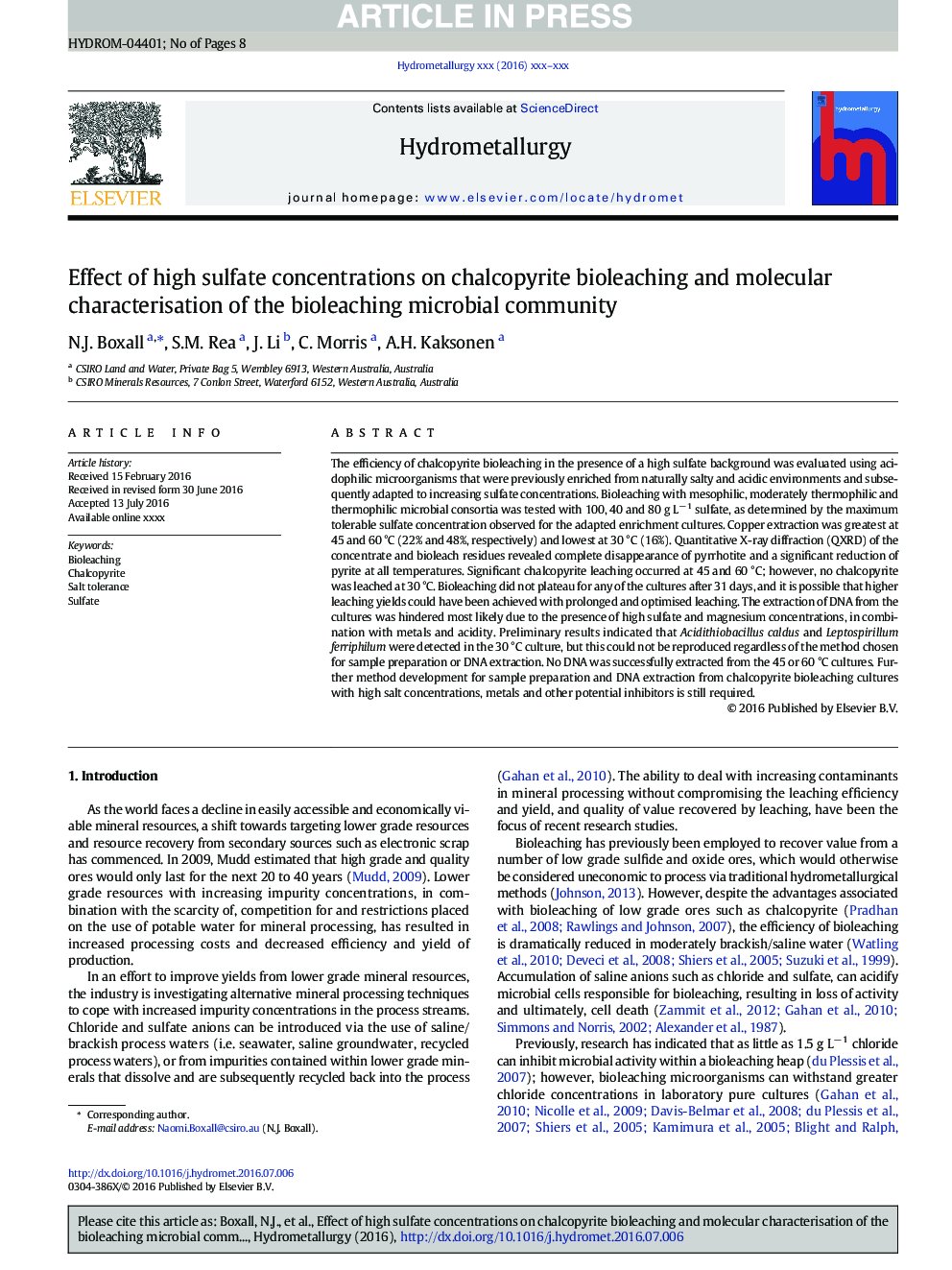| Article ID | Journal | Published Year | Pages | File Type |
|---|---|---|---|---|
| 4769079 | Hydrometallurgy | 2017 | 8 Pages |
Abstract
The efficiency of chalcopyrite bioleaching in the presence of a high sulfate background was evaluated using acidophilic microorganisms that were previously enriched from naturally salty and acidic environments and subsequently adapted to increasing sulfate concentrations. Bioleaching with mesophilic, moderately thermophilic and thermophilic microbial consortia was tested with 100, 40 and 80 g Lâ 1 sulfate, as determined by the maximum tolerable sulfate concentration observed for the adapted enrichment cultures. Copper extraction was greatest at 45 and 60 °C (22% and 48%, respectively) and lowest at 30 °C (16%). Quantitative X-ray diffraction (QXRD) of the concentrate and bioleach residues revealed complete disappearance of pyrrhotite and a significant reduction of pyrite at all temperatures. Significant chalcopyrite leaching occurred at 45 and 60 °C; however, no chalcopyrite was leached at 30 °C. Bioleaching did not plateau for any of the cultures after 31 days, and it is possible that higher leaching yields could have been achieved with prolonged and optimised leaching. The extraction of DNA from the cultures was hindered most likely due to the presence of high sulfate and magnesium concentrations, in combination with metals and acidity. Preliminary results indicated that Acidithiobacillus caldus and Leptospirillum ferriphilum were detected in the 30 °C culture, but this could not be reproduced regardless of the method chosen for sample preparation or DNA extraction. No DNA was successfully extracted from the 45 or 60 °C cultures. Further method development for sample preparation and DNA extraction from chalcopyrite bioleaching cultures with high salt concentrations, metals and other potential inhibitors is still required.
Related Topics
Physical Sciences and Engineering
Chemical Engineering
Chemical Engineering (General)
Authors
Naomi J. Boxall, S.M. Rea, J. Li, C. Morris, A.H. Kaksonen,
